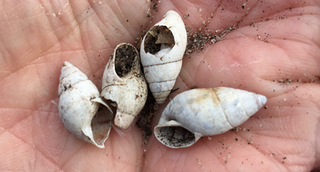
Podcast: Play in new window | Download (Duration: 26:38 — 18.6MB)
Subscribe: Google Podcasts | Spotify | Android | RSS | More
 The Pamir Mountains of Central Asia hold a fascinating diversity of food crops. Exploring the area in the early years of the 20th century the great Russian botanist Nikolai Vavilov became convinced that this was where “the original evolution of many cultivated plants took place.” Soft club wheat, with its short ears, rye, barley, oil plants, grain legumes like chick peas and lentils, melons and many fruits and vegetables; all showed the kind of diversity that Vavilov said pointed to the places where they were first domesticated. As he wrote, “it is still possible to observe the almost imperceptible transition from wild to cultivated forms within the area.”
The Pamir Mountains of Central Asia hold a fascinating diversity of food crops. Exploring the area in the early years of the 20th century the great Russian botanist Nikolai Vavilov became convinced that this was where “the original evolution of many cultivated plants took place.” Soft club wheat, with its short ears, rye, barley, oil plants, grain legumes like chick peas and lentils, melons and many fruits and vegetables; all showed the kind of diversity that Vavilov said pointed to the places where they were first domesticated. As he wrote, “it is still possible to observe the almost imperceptible transition from wild to cultivated forms within the area.”
Frederik van Oudenhoven first travelled to the Pamirs in 2007 to document what remained of that rich agricultural biodiversity. What he found was bewildering, until he began to talk to Pamiri people, and especially the older women, about their food and culture. The result is With Our Own Hands: a celebration of food and life in the Pamir Mountains of Tajikistan and Afghanistan, a new book by van Oudenhoven and his co-author Jamila Haider, that documents a culture that remains in danger of disappearing.
Notes
- With Our Own Hands is published by LM Publishers, who say it will be available from tomorrow, 7 July. If you think you might want a copy, order without delay; until tomorrow the price is reduced to €34.50 from €54.50. You can get a taste here.
- There are also a couple of scholarly articles online. Imagining alternative futures through the lens of food in the Afghan and Tajik Pamir mountains and Food as a method in development practice.
- Photos by Frederik van Oudenhoven. The banner shows an Afghan settlement in Darvaz, along the Panj River, in autumn, with yellow mulberrry trees and red apricots. the other picture is Frederik and his co-author Jamila Haider.

 People looking for a good place to eat in Rome can choose from almost as many opinions as there are restaurants. Truth be told, though, a lot of those opinions have been shared by ninnies. Seriously, if you’re looking for some harmless entertainment as you wait for the bill to arrive after an excellent meal that you’ve thoroughly enjoyed, read what some of the people on some crowd-sourced websites have said about the place where you are eating. But I digress. Rather than wade through countless ninny-posts looking for a realistic recommendation, many visitors, and some residents, turn to one of the food writers based here. Among those, one person reigns supreme: Elizabeth Minchilli. Through social media, apps, books and tours, she tirelessly points people in the right direction. Her new book came out this spring. That’s a good enough reason for me to sit down for a drink with Elizabeth in her local neighbourhood.
People looking for a good place to eat in Rome can choose from almost as many opinions as there are restaurants. Truth be told, though, a lot of those opinions have been shared by ninnies. Seriously, if you’re looking for some harmless entertainment as you wait for the bill to arrive after an excellent meal that you’ve thoroughly enjoyed, read what some of the people on some crowd-sourced websites have said about the place where you are eating. But I digress. Rather than wade through countless ninny-posts looking for a realistic recommendation, many visitors, and some residents, turn to one of the food writers based here. Among those, one person reigns supreme: Elizabeth Minchilli. Through social media, apps, books and tours, she tirelessly points people in the right direction. Her new book came out this spring. That’s a good enough reason for me to sit down for a drink with Elizabeth in her local neighbourhood.
 Day after day, week after week, special agents keep a look out for invaders that they really don’t want to find. And we, the ordinary public, give them barely a second thought. Worse, we sometimes provide the means for the invaders to get in. Of course when it all goes wrong, there’s an outcry, as there has been for the Mediterranean fruit fly, the European corn borer, the giant African snail and many other pests. Most of the time, however, we remain blissfully unaware. And most of the time, pests either don’t get in or are detected fairly quickly and eradicated.
Day after day, week after week, special agents keep a look out for invaders that they really don’t want to find. And we, the ordinary public, give them barely a second thought. Worse, we sometimes provide the means for the invaders to get in. Of course when it all goes wrong, there’s an outcry, as there has been for the Mediterranean fruit fly, the European corn borer, the giant African snail and many other pests. Most of the time, however, we remain blissfully unaware. And most of the time, pests either don’t get in or are detected fairly quickly and eradicated.